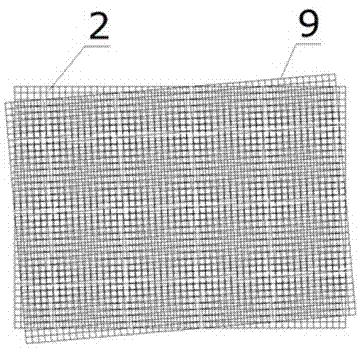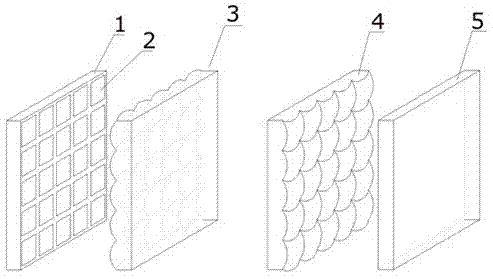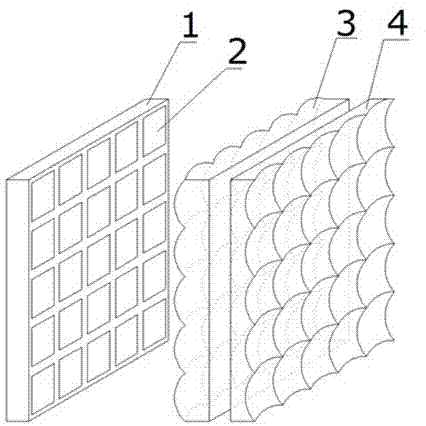LED display device
A LED display screen and display device technology, applied in the field of display screens, can solve problems such as low resolution, poor optical uniformity of display images, and inability to combine LED pixels well, so as to achieve good optical uniformity, ensure image quality and display The effect of sharpness
- Summary
- Abstract
- Description
- Claims
- Application Information
AI Technical Summary
Problems solved by technology
Method used
Image
Examples
Embodiment 1
[0033] Such as figure 2 As shown, it is a schematic structural diagram of a specific embodiment of an LED display device according to the present invention. see figure 2 An LED display device in this specific embodiment includes an LED display screen 1, a lens array I3 and a lens array II4 are sequentially arranged in front of the LED display screen 1, and the LED pixels 2 on the LED display screen 1 pass through the lens array I3 and the lens array II4. Afterwards, it becomes an upright enlarged image. In this specific embodiment, the lens array I3 is arranged between the LED display screen 1 and the lens array II4, and the joint action of the lens array I3 and the lens array II4 forms an upright enlarged image for the LED pixels 2 of the LED display screen 1 . Because the LED pixel 2 is enlarged, the non-luminous gap between the pixels is eliminated, thereby eliminating the occurrence of inclination angles between the CCD or CMOS sensor pixels and the LED pixels when the...
Embodiment 2
[0055] Such as figure 2 As shown, an LED display device of this embodiment includes an LED display screen 1, and a lens array I3 and a lens array II4 are sequentially arranged in front of the LED display screen 1, and the lenses in the lens array I3 and the lens array II4 form a regular two-dimensional network. shape distribution, and lens array I3 and lens array II4 are convex lenses. The lens array I3 is placed so that the LED pixel 2 is located near twice the focal length of the lens array I3, and the LED pixel 2 forms an inverted transitional image of equal size through the lens array I3. This transitional image is used as the object of the lens array II4, and the object distance is within Between one focal length and two focal lengths of the array II 4 , an upright enlarged real image can be finally formed for the LED pixel 2 . Since the finally formed image is a real image, a real image receiving screen 5 can be arranged at the final imaging surface of the two lens arr...
Embodiment 3
[0060] Such as image 3 As shown, an LED display device of this embodiment includes an LED display screen 1, and a lens array I3 and a lens array II4 are sequentially arranged in front of the LED display screen 1, and the lenses in the lens array I3 and the lens array II4 form a regular two-dimensional network. Shape distribution, the lenses in lens array I3 are convex lenses, and the lenses in lens array II4 are concave lenses. The lens array I3 is placed so that the LED pixel 2 is located near twice the focal length of the lens array I3, and the LED pixel 2 forms an inverted transitional image of equal size through the lens array I3. This transitional image is used as the object of the lens array II4, and the object distance is within Between one focal length and two focal lengths of the array II 4 , an upright enlarged image can finally be formed for the LED pixel 2 . The convex-concave lens combination can eliminate more aberrations, so that the imaging quality of the LED...
PUM
 Login to View More
Login to View More Abstract
Description
Claims
Application Information
 Login to View More
Login to View More - R&D
- Intellectual Property
- Life Sciences
- Materials
- Tech Scout
- Unparalleled Data Quality
- Higher Quality Content
- 60% Fewer Hallucinations
Browse by: Latest US Patents, China's latest patents, Technical Efficacy Thesaurus, Application Domain, Technology Topic, Popular Technical Reports.
© 2025 PatSnap. All rights reserved.Legal|Privacy policy|Modern Slavery Act Transparency Statement|Sitemap|About US| Contact US: help@patsnap.com



